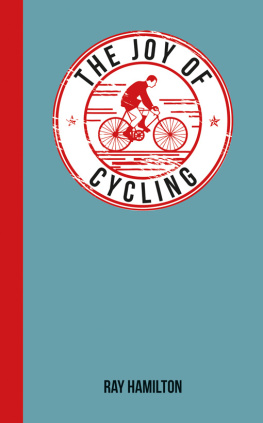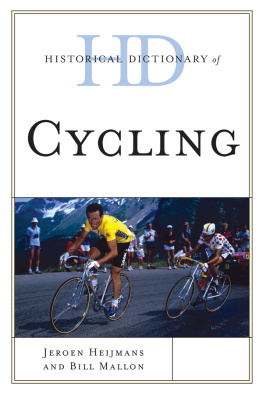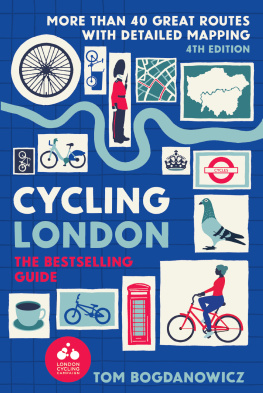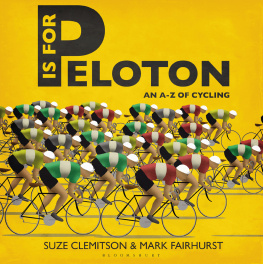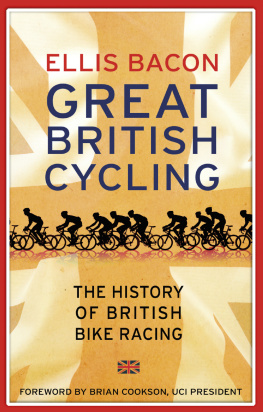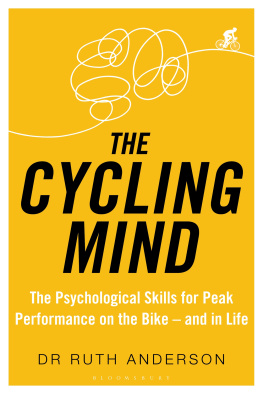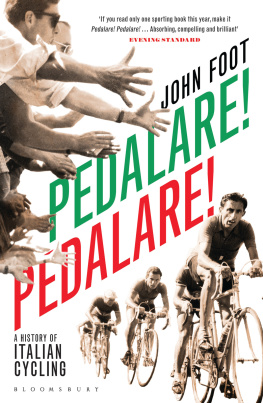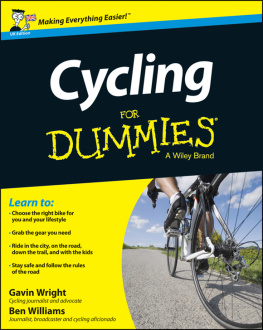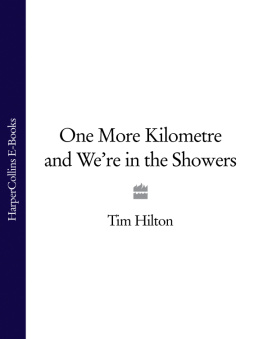Cycling and the British
Cycling and the British
A Modern History
NEIL CARTER
Contents
Many people have helped in the writing and research of this book. I am grateful to all those at Bloomsbury Academic for their patience and understanding, especially Emily Drewe, Joseph Gautham, Abigail Lane and Dan Hutchins.
I am particularly grateful to Richard Holt who read numerous drafts and provided reassuring support at important times during the whole process. For other drafts, Dil Porter made typically sensible and astute suggestions.
My colleagues in the International Centre for Sports History and Culture Martin Polley, Matt Taylor, Heather Dichter, James Panter and Rob Colls were generous with their time and advice, while I am also grateful for the support I received from colleagues in the History Department at DMU.
Many, many thanks also to the staff at the Modern Records Centre at the University of Warwick who not only provided expert advice on its cycling archive but were also good humoured and friendly while putting up with my numerous requests and questions.
Finally, I am grateful to everyone who has been keen to share with me their stories on and insights into cycling a number of which have been included in the book. This as much as anything has highlighted how universal cycling has been throughout the period studied.
AAA | Amateur Athletic Association |
AAC | Amateur Athletic Club |
BAR | Best All-Rounder |
BBC | British Broadcasting Corporation |
BC | bicycle club |
BCF | British Cycling Federation |
BLRC | British League of Racing Cyclists |
BMA | British Medical Association |
BMX | Bicycle Motocross |
BU | Bicycle Union |
CC | cycling club |
CM | Critical Mass |
CTC | Cyclists Touring Club |
FIFA | Fdration Internationale de Football Association |
HPV | human powered vehicle |
ICA | International Cycling Association |
IMG | International Management Group |
MoT | Ministry of Transport |
MSR | massed-start racing |
MTB | mountain bike |
NCPS | National Cycling Proficiency Scheme |
NCU | National Cyclists Union |
NFC | National Fitness Council |
NGO | non-governmental organisation |
PED | performance enhancing drugs |
RoSPA | Royal Society for the Prevention of Accidents |
RRA | Road Records Association |
RRC | Road Racing Council |
RTTC | Road Time Trials Association |
TfL | Transport for London |
TT | time-trial |
UCI | Union Cycliste Internationale |
WRRA | Womens Road Records Association |
Since the late nineteenth century, cyclings presence in British society has been remarkably persistent. It has been a presence though that has flickered, sometimes brightly, sometimes dimly. In recent years, interest in cycling has grown exponentially, although the extent of its popularity and its impact has been contested. Its level of public awareness arguably reached a peak on 22 July 2012 when the final stage of the Tour de France took place on the Champs-lyses in Paris. In a scene that the writer William Fotheringham called a surreal sight, the wearer of the yellow jersey, Bradley Wiggins, soon to be the first British winner of the race, led out Mark Cavendish, wearing the rainbow jersey as the world champion, for the final sprint, which he won. These landmark successes were quickly followed with a glut of cycling gold medals at the London Olympics. At the same time, cyclings place on the political agenda had never been higher due to a combination of a growing awareness of environmental issues and increasing concerns over well-being.
These twenty-first-century images offered a contrast with past ones of the bicycle and its place in popular culture. In December 1963, for example, Coronation Street , still Britains longest-running television show, was first aired on ITV. One of the opening scenes is set at the Barlows dinner table where the younger son, David, arrives home late from work because his bicycle had had a puncture. Later, his father is seen helping him to fix it in the backroom. While broadcast at the onset of the age of the motor car, Coronation Street owed more to the 1930s than to the 1960s, and as such there was more than a whiff of nostalgia about the scene, as with the programme in general. The 1930s had been a time when the bicycle was an elemental part of working-class culture. Not only was it a form of transport, but it was also used for leisure and pleasure as people, with a group of friends, with partners or just riding for their own enjoyment, could escape into the countryside on their bicycles and tandems to imbibe its fresh air and scenery.
Fast-forward over 30 years and in the video for Pulps 1995 Britpop anthem Common People there are brief shots of a Raleigh Chopper being ridden in a street. Again, with its association with the 1970s, the Chopper represents a nostalgic nod to the bands frontman Jarvis Cockers childhood. The early 1970s, however, had represented a shift in the status of the bicycle. The dominance of the motor car in terms of its economic and cultural appeal forced major changes on the cycling industry, changing the very idea of the bicycle itself. Whereas once it was regarded as a vehicle that adults rode, and this had been reflected in its design, now bicycles had an urban edge and increasingly appealed to children. The Choppers unique design was driven by changing consumerist tastes. It was conceived to be edgy and niche, reflecting other aspects of popular culture, in this case the motorbikes from the 1969 film Easy Rider . Not only does the appearance of a bicycle in these settings reveal its versatility, diversity and ubiquity since the nineteenth century, but these brief, almost subliminal appearances also highlight how it has been on the margins of British society rather than at its centre.
Cycling since the late nineteenth century has meant different things to different people at different times. This book aims to not only capture these changing meanings but also understand why people rode bicycles and also why they did not as well as which people rode them, in addition to analysing how different forms of cycling, whether as sport, as leisure or as a form of transport, developed. Politics and pleasure, therefore, form the centre of this book.


